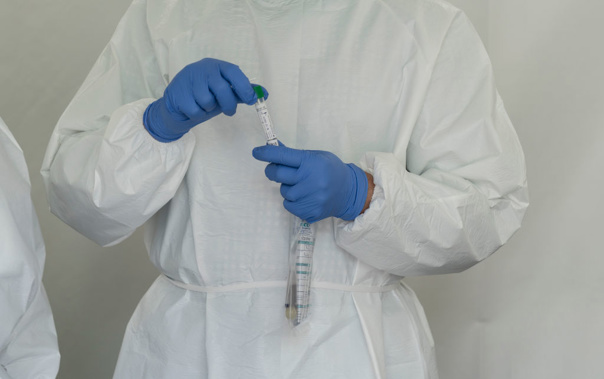
New Zealand has experienced two pandemics in recent years.
The first was the swine flu pandemic, caused by the H1N1 influenza virus, which originated in Mexico in 2009. It is estimated to have affected as many as 1.4 billion people world-wide over about a period of some 119 months, causing more than upwards of 600,000 deaths.
The second was the Covid-19 pandemic, caused by the SARSars-CoV-2 virus, which originated in Wuhan, in China in December 2019. While the World Health Organisation reports almost 800 million cases and more than 7 million deaths, they believe this grossly under-represents the true situation.
When the first pandemic arrived in New Zealand, John Key’s National Government adopted the Ministry of Health’s Influenza Pandemic Plan. When the second pandemic hit, Jacinda Ardern’s Labour Government rejected the plan, the Ministry’s Pandemic Plan, taking the country down a very different path.
How the Ardern administration managed the pandemic is under review, improve New Zealand’s future pandemic preparedness. However, since the initial terms of reference for the Royal Commission of Inquiry into Covid-19 attracted criticism for being too narrowly focused, the Government is expanding the inquiry and submissions have now been called to ascertain what should be included.
A good place to start is to compare the 2009 and 2019 responses.
The Ministry of Health’s pandemic plan was a mitigation strategy designed to keep infection at manageable levels until natural immunity to the virus was built. It had three main goals. The first was to minimise the impact of the disease and mitigate its effects. The second was to keep society functioning as normally as possible during and after the pandemic. And the third was to minimise the economic consequences.
The idea was to manage an outbreak in such a way as to prevent hospitals from becoming overwhelmed while reducing the impact on society and the economy. During the swine flu pandemic, while border controls were introduced, and some schools and businesses temporarily closed to reduce the spread of the disease, there was minimum economic and social disruption.
Furthermore, family doctors played a central role, to help maintain, as far as possible, normal healthcare.
Altogether it’s estimated that of the 430,000 symptomatic cases of swine flu in New Zealand, around 116,000 of them visited GPs, about 1100 were hospitalised, and 119 patients were admitted to intensive care units. Of the 49 deaths attributed to the disease, 86 per cent had underlying health complications, most notably, respiratory illnesses, obesity and substance abuse.
At the start of the pandemic in 2020 Jacinda Ardern’s Labour Government followed the Ministry of Health’s Pandemic Plan. By mid-March there was to be a 30-day focus on slowing the spread of the virus through stricter border controls, a restriction on gatherings to 100 people, and extra precautions for those at the greatest risk. However, within a matter of days, the Prime Minister took control.
A “team” of PR advisers was appointed, and the tried and tested Pandemic Plan was ditched, as the strategy changed from managing the virus to eliminating it.
Without any cost-benefit analysis or regulatory impact statement, the country was ordered into one of the world’s harshest lockdowns – against Ministry of Health advice.
Many experts objected.
According to former New Zealander of the Year Sir Ray Avery, trying to eliminate a flu-type virus was impossible: “In the history of all humankind, we have only ever eliminated one major infectious disease – smallpox.”
He warned there would be severe consequences: “This virus will have caused more economic damage, loss of livelihoods, increased suicides, disruption to our education system, inhuman treatment of our elderly and irreversible social changes than actual deaths.”
In Britain, the former British Supreme Court Justice Lord Sumption, also railed against lockdowns. He believes that whenever democratic safeguards are suspended it’s the public’s duty to hold the government to account.
With Covid being no worse than a bad flu for the majority of people, he asked, “Is this serious enough to warrant putting most of our population into house imprisonment, wrecking our economy, destroying businesses that honest and hardworking people have taken years to build up, saddling future generations with debt, depression, stress, heart attacks, suicides and unbelievable distress inflicted on millions of people who are not especially vulnerable and will suffer only mild symptoms or none at all?”
In New Zealand, holding the government to account was proving difficult as the Prime Minister had taken control of the narrative, claiming her Government was the “single source of truth”: “unless you hear it from us, it is not the truth”.
With the media, the medical profession, and the opposition parliamentary parties largely falling into line, alternative views were silenced in an environment where government propaganda dominated.
Instead of playing a central role in the management of the pandemic, family doctors were not only sidelined, but their independence was compromised by professional bodies that heavily restricted what they could advise patients – and prescribe.
When Covid vaccines became available, Jacinda Ardern chose Pfizer – a genetically modified messenger RNA vaccine that had been rushed to market before the clinical trials had been completed.
Concerns about the experimental nature of the vaccine were allayed, however, when the PM confirmed just before the 2020 general election that under her watch vaccination would be voluntary.
Such an assurance upheld the freedoms guaranteed in New Zealand’s Bill of Rights including Section 10 which states: “Every person has the right not to be subjected to medical or scientific experimentation without that person’s consent”, and Section 11: “Everyone has the right to refuse to undergo any medical treatment.”
But Ardern broke her word.
In 2021, against the advice of the Ministry of Health and without any Regulatory Impact Analysis, she imposed mandates.
The official rhetoric from the “sole source of truth” was that vaccine mandates were being introduced to "stop the spread of the virus". But that too was a lie. Section 11AA of the Covid-19 Response (Vaccinations) Legislation Bill revealed their purpose was to “ensure the continuity of public services”.
But given the relatively small number of affected staff, even that justification did not stack up.
With Ardern pushing for New Zealand to become a world leader in vaccine uptake, mandates were used to coerce staff to accepting the vaccine – even though high-quality protective equipment (PPE) could have been used instead by those who were anxious.
Mandates divided society.
It was ugly politics.
With tensions rising and the Canadian truckers’ protest in the news, on February 6, 2022, a "freedom convoy" opposing mandates set off for Parliament – from Cape Reinga in the north and Bluff in the south. By the time they arrived in Wellington protest numbers had swelled to thousands. But MPs refused to meet them, and with no one willing to deliver their message to the Prime Minister asking for an end to the mandates, they pitched their tents on Parliament grounds and stayed.
At its height, about 12,000 people supported the protest – 55 per cent were women, 45 per cent Labour-Green supporters, and 27 were per cent Māori.
Labour MPs denigrated those affected by the mandates calling them “ferals” and a “river of filth” instead of displaying empathy. But in spite of such opposition, public support for the protest reached 30 per cent, making it impossible to dismiss them as fringe.
At dawn on March 2, 2022, Police in riot gear advanced on the protesters in what was to become one of New Zealand’s darkest days. It was a turning point in Ardern’s tenure as Prime Minister.
To date, New Zealand has had 2.6 million reported cases of Covid and more than 5700 deaths. At its peak there were almost 25,000 cases a day and upwards of 70 deaths.
There is no question that New Zealand, like many other countries that adopted similar policy responses with lockdowns and mRNA vaccines, has experienced “excess” deaths after the pandemic.
Waikato University’s Economics Professor John Gibson has been investigating this trend and has just published new research showing that last year, “the excess mortality rate is averaging just over 8 per cent; corresponding to about 3000 more deaths than would be expected”.
It is bizarre that little is being said about excess deaths – 3000 more lives lost last year than predicted is not insignificant. Surely there needs to be an inquiry. If the management of the pandemic has contributed to this alarming situation, New Zealanders need to know.
And the Royal Commission most certainly needs to know whether the Ardern Government’s response to the pandemic is now resulting in thousands of excess deaths of New Zealanders each year.
There are many more questions that need to be asked.
On whose authority was the Ministry of Health’s Pandemic Plan abandoned? And why was Ardern able to lock down our entire country without any official advice, nor even the legal powers to do so?
Was medical treatment to patients with cancer and other serious health conditions suspended during the lockdowns – and if so, on who’s authority and why?
What hold did the Government have over the media to prevent them from acting as an unbiased Fourth Estate? And why weren’t opposition parties able to act as a true opposition, challenging Labour’s decisions – what hold did the Government have over them?
Why weren’t alternative Covid treatments and preventative measures that were proving to be successful overseas made available to New Zealanders?
Who authorised the undermining of the medical independence of our GPs?
Why was an experimental mRNA genetic vaccine forced onto the population without a proper process of informed consent including full disclosure of possible side effects?
Why hasn’t the Pfizer purchase agreement been released? Did it absolve the company of legal liability for vaccine injury? Did it force the Government to continue promoting boosters even though there are now serious concerns about their safety and efficacy? Did it prevent other remedies from being recommended by the Ministry of Health?
What impact did the government’s abolition of district health boards and restructuring of the health system in the middle of the pandemic have on the performance of hospitals?
And we haven’t even mentioned the impact that the Government’s Covid strategy has had on children and their education. Nor the serious concerns raised by the Auditor General over Labour’s “splashing the cash” on Covid, and their appalling lack of accountability for the spending of vast amounts of taxpayers’ money.
There are also questions over the performance of the Director General of Health. Instead of providing independent and impartial advice to the Government, the statutory role appeared to have become highly politicised, raising serious questions about the impartiality of the public service.
One would hope that such questions form part of the investigation into Covid by the Royal Commission as New Zealanders deserve to know the truth.
Take your Radio, Podcasts and Music with you









